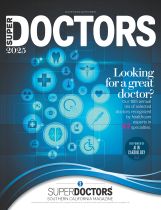National Institutes of Health (NIH)
January 1, 2021
Disease Prevention, Diagnosis, and Treatment
With NIH support, scientists across the United States and around the world conduct wide-ranging research to discover ways to enhance health, lengthen life, and reduce illness and disability. Groundbreaking NIH-funded research often receives top scientific honors. In 2020, these honors included one of NIH’s own scientists and another NIH-supported scientist who received Nobel Prizes. Here’s just a small sample of the NIH-supported research accomplishments in 2020. For more health and medical research findings from NIH, visit NIH Research Matters.
Full 2020 NIH Research Highlights List
COVID-19 vaccines and treatments
Since first appearing in China late last year, COVID-19 has become an ongoing global pandemic. NIH researchers quickly began testing potential treatments to help reduce the severity of the disease. Remdesivir, a broad-spectrum antiviral treatment, showed early promise. Results from the completed trial in October showed that it shortened recovery time for patients hospitalized with COVID-19. NIH research was also instrumental in determining which treatments, such as hydroxychloroquine, were ultimately not effective. Meanwhile, NIH researchers began developing vaccine candidates to protect against the disease. The first COVID-19 vaccine candidate tested in people, co-developed by NIH and the biotech company Moderna, Inc., triggered an immune response against the virus without serious side effects. An analysis in November found the vaccine was safe and well-tolerated, with a vaccine efficacy rate of 94.5%. The FDA approved it for emergency use in December. NIH also launched the Rapid Acceleration of Diagnostics (RADxSM) initiative to speed innovation in COVID-19 testing. An NIH-funded COVID-19 home test was the first to receive over-the-counter authorization from the FDA.
Comparing heart disease treatments
People with moderate to severe but stable heart disease may undergo invasive procedures, such as bypass surgery and stenting, or manage their condition with medication and lifestyle changes alone. A study showed that invasive procedures may offer better symptom relief and quality of life for some patients with chest pain. But for those who didn't have any symptoms, it was safe to begin treatment with non-invasive approaches. The findings may change clinical practice and official guidelines for treating patients.
Combining tests more accurately diagnoses prostate cancer
The type of biopsy traditionally used to diagnose prostate cancer takes systematically spaced tissue samples from the prostate gland. This method isn’t targeted and can lead to uncertainty about whether a man has aggressive prostate cancer. Researchers found that adding MRI-targeted biopsies to the traditional prostate biopsy created a more accurate diagnosis and prediction of the course of prostate cancer. The approach is poised to help reduce both overtreatment and undertreatment of the disease.
Early detection of Alzheimer’s disease
Having a simple blood test to detect Alzheimer’s disease before symptoms develop would aid the study of treatments to slow or stop its progression. Studies found that a protein called ptau181, which can be measured in the blood, was as good as invasive or expensive tests at diagnosing Alzheimer’s early. Another protein, called ptau217, was even better at predicting who would later develop the disease. A type of brain imaging could also play a role in tracking disease development. These approaches could help identify people to participate in trials of early treatments or preventive strategies.
Number of steps per day more important than step intensity
Walking is an easy way for many inactive people to ease into better health. A goal of 10,000 steps a day is common. A study found that adults who took at least 8,000 steps a day had a reduced risk of death over the following decade than those who only walked 4,000 steps a day. Step intensity (number of steps per minute) didn’t influence the risk of death, suggesting that the total number of steps per day is more important than intensity.
Harnessing the health benefits of bacteria
Some types of bacteria cause disease, but others can help protect human health. A strain of bacteria called Lactobacillus crispatus was used as a treatment to prevent recurring bacterial vaginosis. In another study, treatment with the bacterium Roseomonas mucosa, taken from healthy human skin, improved eczema in children. These findings show the potential of harnessing the healthy human microbiome to prevent or treat disease.
Multifocal contact lenses slow myopia progression in children
Myopia, also called nearsightedness, is a common vision problem, where close objects can be seen clearly but objects farther away appear blurry. In the U.S., myopia typically begins in childhood. Researchers found that children who wore certain multifocal contact lenses had slower progression of their myopia, or nearsightedness, over three years. The findings support using multifocal contacts to treat myopia in children, which could also help prevent other vision problems later in life.
Biomarkers predict recovery from brain injury
More than a million people in the U.S. experience a mild traumatic brain injury, or concussion, every year. Researchers found that military veterans with higher blood levels of a protein released by injured neurons were more likely to report long-term symptoms. More study is needed to confirm whether this could be used to predict who is at risk of long-term health problems after concussion. Two blood proteins were linked to the time needed by college athletes to return to play following a concussion. These biomarkers may help doctors predict which athletes need additional time to recover.

